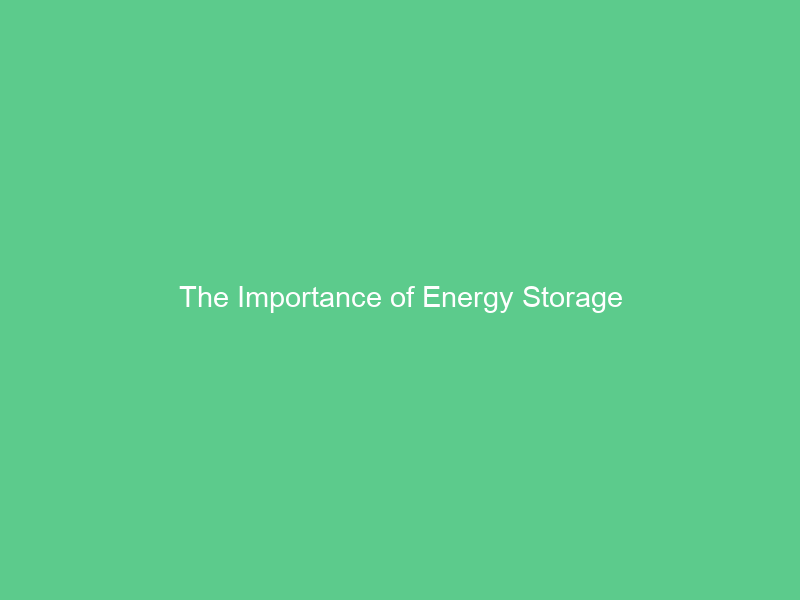Energy storage enables renewable sources to be utilized more effectively by storing electricity for use at later dates and helping customers reduce costs by smoothing demand.
Lithium-ion batteries are the dominant technology for utility-scale battery ESSs. Other technologies may include flywheels (which store kinetic energy) and thermal ice storage systems.
Electricity
The electricity grid operates with a delicate equilibrium between supply (generation) and demand (consumer use). Energy storage systems can help achieve this balance by charging with energy from intermittent renewables during times of high production or low demand, then discharging into the grid at times of peak demand. Installation options vary widely: transmission/distribution system storage devices like batteries/flywheels can typically operate over shorter cycles while pumped hydro and compressed air storage provide more consistent electricity output over longer timeframes.
Many states are taking initiatives to facilitate the deployment of energy storage technologies as an aid in aligning variable wind and solar generation with demand as well as reduce expensive backup power plant requirements. Energy storage also can help lower demand charges for end users by participating in utility demand-side management programs.
Heat
Heat storage is a critical element of energy systems, providing renewable power with reliable heat at times when needed and meeting any mismatch between supply and demand for certain forms of renewable energies.
Sensible heat storage involves altering the temperature of an object such as water or thermal oil. MIT researchers have created an efficient means of doing this using phase-change material which stores heat when it melts before dissipating it when solidifying again.
RTC will host a webinar with Brattle Group and Roland Berger to explore how innovations in long duration energy storage (LDES) can enable industrial decarbonization through thermal storage. The webinar will cover LDES benchmarking results as well as provide new insight on thermal energy storage’s role in providing cost-efficient low carbon electricity solutions to end use applications.
Transport
Transport involves moving people and goods from one place to the next physically. Transport services play a pivotal role in economic development by supporting specialization and trade by transporting raw materials directly into production centers and then dispensing completed products for consumption.
Transport uses various energy sources, such as electricity, natural gas, fuel cells, pumped hydro storage and batteries to power its vehicles and operations. Utilizing advanced systems for route optimization can significantly cut costs, lessen environmental impacts and shorten travel times while improving service delivery.
Commercially available ESSs consist of a large-format power cell paired with supporting subsystems for physical support, protection and thermal management. Depending on their design, certain ESS types may require transport as dangerous goods in enclosed spaces aboard marine vessels (i.e. container cargo holds or closed roll-on/roll-off (ro-ro) spaces). This research examined hazards associated with different ESS types shipped as cargo according to the current International Maritime Dangerous Goods Code.
Water
Water storage is an integral component of adapting to climate change by helping to store renewable energy sources like solar or wind. Water storage projects must also consider their environmental impacts to ensure they do not disrupt aquatic ecosystems and thus increase flooding risks.
Thermal energy can be used to store water. For example, air conditioning systems in office buildings may use off-peak electricity to freeze it into a tank before melting it off when needed for cooling purposes – offsetting energy use with reduced needs to generate electricity generation costs.
Packed Storage Hydroelectricity (PSH) is one of the more established water-based energy storage technologies, featuring utility-scale ESSs that use electricity to pump water uphill between two reservoirs located at different elevations and then back down again, driving turbines to generate electricity. PSH systems are cheaper than lithium-ion batteries and can last over 100 years with proper care and planning – however they require large volumes of water, topography that permits construction of lower and higher reservoirs, as well as regulatory approval to disturb landscape.

